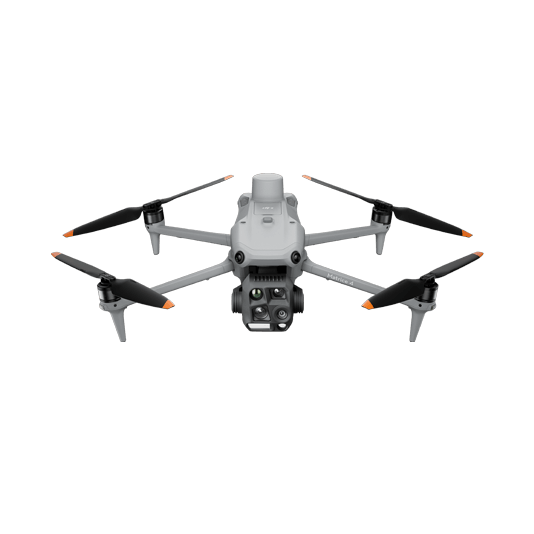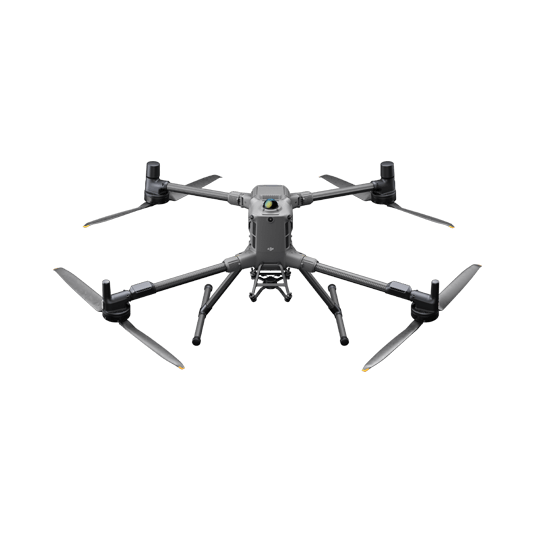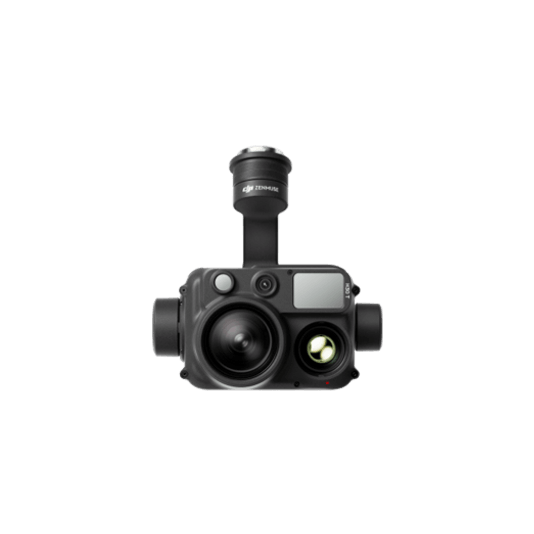Urban Fires
Tackle urban fire emergencies with drone thermal readings; improve your response efforts by localizing hotspots and deploying teams more effectively.
Painpoints
Advantages
Firefighters often have little information about the complexity of the situation before entering a structure.
Assess the severity of the incident in real-time and deploy teams to focus on the major sources of fire.
Information exchange between fire brigades is often inefficient, hindering the effectiveness of the fire response and the chances of early mitigation.
Monitor the fire incident with a thermal aerial perspective to better coordinate the response and strategically deploy fire brigades.
Main fire sources might be hidden under debris, smoke, or flames, making it difficult to identify and extinguish them.
Thermal drone imagery can detect different fire sources and their respective temperatures.
Solution
Quick Risk Assessment
High Performance Fire Response
Versatile Aerial Thermal Reconnaissance
Quick Risk Assessment
The Matrice 4T offers unparalleled portability for quick deployment missions. Easy to carry on fire response vehicles and equipped with visual and thermal cameras, it's the ideal solution for initial risk evaluations.
Compact and lightweight design, around 1.2 kg and easy to carry in the response vehicle.
Fast and easy deployment, get airborne in around 30 seconds.
640 × 512 thermal radiometric sensor for accurate temperature readings.
Thermal palettes and temperature measurement tools for easy data interpretation.
Drone Platform

DJI Matrice 4T
... Open
Weight: 1219 g (with propellers)
Max Flight Time (without wind): 49 minutes
Environment Adaptability: Max takeoff altitude 6000 m, max wind speed resistance 12 m/s
Sensing System: Omnidirectional binocular vision system, supplemented with a 3D infrared sensor at the bottom of the aircraft
Wide-Angle Camera: 1/1.3-inch CMOS, 48MP effective pixels (Matrice 4T)
Medium Tele Camera: 1/1.3-inch CMOS, 48MP effective pixels
Telephoto Camera: 1/1.5-inch CMOS, 48MP effective pixels
Infrared Thermal Camera: 1280 × 1024@30fps (Super Resolution enabled, Night Mode not activated)
Laser Rangefinding: 1800m measurement range (1 Hz) @20% reflectivity target
Max Flight Time (without wind): 49 minutes
Environment Adaptability: Max takeoff altitude 6000 m, max wind speed resistance 12 m/s
Sensing System: Omnidirectional binocular vision system, supplemented with a 3D infrared sensor at the bottom of the aircraft
Wide-Angle Camera: 1/1.3-inch CMOS, 48MP effective pixels (Matrice 4T)
Medium Tele Camera: 1/1.3-inch CMOS, 48MP effective pixels
Telephoto Camera: 1/1.5-inch CMOS, 48MP effective pixels
Infrared Thermal Camera: 1280 × 1024@30fps (Super Resolution enabled, Night Mode not activated)
Laser Rangefinding: 1800m measurement range (1 Hz) @20% reflectivity target
Workflow
- Mission Execution:
- Fly manually over the affected area looking for hotspots. Switch between infrared and visual views to evaluate the situation.
- Select a suitable infrared palette and gain mode for the conditions at hand.
- Use orbit flights to perform 360 circular flights around the structure, facilitating the risk evaluation.
- Use the Link Zoom feature to zoom in simultaneously with thermal and visual sensors.
- Share live feed with command staff through DJI FlightHub 2. - Post Mission Documentation:
- Collect the videos and photos captured during the mission through DJI FlightHub 2 or download from drone SD card to be used as evidence or debrief documentation.
High Performance Fire Response
The Matrice 400, equipped with the Zenmuse H30T, brings enhanced thermal capabilities to fire response. Using the new H30T Night Scene mode, fire brigades can now gain valuable insights during low-light operations.
Reliable multipurpose drone platform easily adapts to the mission needs.
Powerful infrared sensor with 1280 × 1024 resolution provides superb thermal imagery.
Robust and reliable, payload IP54 graded, allows you to fly when is most needed.
Laser range finder to get accurate coordinates of objects up to 3,000 meters range.
Enhanced full-color or black-white night vision to easily identify risks.
Drone Platform

DJI Matrice 400
... Open
Weight: 9740±40 g (with batteries)
Max Takeoff Weight: 15.8 kg
Max Payload: 6 kg
Max Flight Time: 59 minutes
Max Horizontal Speed: 25 m/s
Sensing System: Omnidirectional binocular vision system (surround view provided by full-color fisheye vision sensors), horizontal rotating LiDAR, upper LiDAR, downward 3D infrared range sensor, and six-direction mmWave radar
Environment Adaptability: IP55 rating, max takeoff altitude 7000 m, operating temperature -20° to 50° C (-4° to 122° F)
Compatible with the Zenmuse H30 Series, Zenmuse L2, Zenmuse P1, Zenmuse V1, Zenmuse S1, and third-party payloads.
Max Takeoff Weight: 15.8 kg
Max Payload: 6 kg
Max Flight Time: 59 minutes
Max Horizontal Speed: 25 m/s
Sensing System: Omnidirectional binocular vision system (surround view provided by full-color fisheye vision sensors), horizontal rotating LiDAR, upper LiDAR, downward 3D infrared range sensor, and six-direction mmWave radar
Environment Adaptability: IP55 rating, max takeoff altitude 7000 m, operating temperature -20° to 50° C (-4° to 122° F)
Compatible with the Zenmuse H30 Series, Zenmuse L2, Zenmuse P1, Zenmuse V1, Zenmuse S1, and third-party payloads.
Payload And Software

Zenmuse H30T
... Open
Wide-Angle RGB Camera: 1/1.3-inch CMOS, 48MP effective pixels
Zoom RGB Camera: 1/1.8-inch CMOS, 40MP effective pixels, 34× hybrid optical zoom
Infrared Thermal Camera: 1280×1024@30fps
NIR Auxiliary Light Illumination Range: Approx. 8m diameter circle@100 m
Laser Range Finder: Max measurement range 3000 m
Zoom RGB Camera: 1/1.8-inch CMOS, 40MP effective pixels, 34× hybrid optical zoom
Infrared Thermal Camera: 1280×1024@30fps
NIR Auxiliary Light Illumination Range: Approx. 8m diameter circle@100 m
Laser Range Finder: Max measurement range 3000 m

DJI Pilot 2
... Open
Ground control

Workflow
- Mission Execution:
- Fly manually over the affected area looking for hotspots. Switch between infrared and visual views to evaluate the situation.
- Use the Link Zoom feature to zoom in simultaneously with thermal and visual sensors.
- Select a suitable infrared palette and gain mode for conditions at hand.
- Install the IR Density Filter to increase the measurement range of the thermal sensor.
- Get the coordinates of hotspots using the laser range finder and the Pin Point function.
- Share the coordinates with ground teams through the DJI Pilot 2 QR code or DJI FlightHub 2. - Post Mission Documentation:
- Collect the videos and photos captured during the mission through DJI FlightHub 2 to be used as evidence or debrief documentation.
Versatile Aerial Thermal Reconnaissance
The Matrice 30T strikes the perfect balance between portability and performance. It integrates a hybrid sensor with visual, thermal, and laser range finder capabilities, ensuring optimal performance across a variety of fire emergencies.
Rugged, weatherproof IP55 mid-size airframe, provides balance between portability and endurance.
640 × 512 thermal radiometric sensor for accurate temperature readings.
Optical zoom for detailed object inspection from a safe distance.
Laser range finder to get accurate coordinates of targets.
Hot-swappable batteries and improved charging station for continuous operation.
Night scene feature provides enhanced awareness for low-light operations.
Drone Platform

Matrice 30T
... Open
Weight (incl. two batteries): 3770 ± 10 g.
Max Flight Time: 41 min.
Sensing system: Six-directional sensing and positioning.
Environment Adaptability: Max Service Ceiling Above Sea Level (without other payload) 7,000 m (with 1676 propellers); Max Wind Resistance 12 m/s.
Zoom camera: 1/2-inch CMOS, Effective pixels: 48MP.
Max Flight Time: 41 min.
Sensing system: Six-directional sensing and positioning.
Environment Adaptability: Max Service Ceiling Above Sea Level (without other payload) 7,000 m (with 1676 propellers); Max Wind Resistance 12 m/s.
Zoom camera: 1/2-inch CMOS, Effective pixels: 48MP.
Workflow
- Mission Execution:
- Fly manually over the affected area looking for hotspots. Switch between infrared and visual views to evaluate the situation.
- Use Orbit flights to perform 360 circular flights around the structure, facilitating the risk evaluation.
- Select a suitable infrared palette and gain mode for the conditions at hand.
- Use the Link Zoom feature to zoom in simultaneously with thermal and visual sensors.
- Mark hotspots to revisit using the laser range finder and the Pin Point function.
- Share live feed with command staff through DJI FlightHub 2. - Post Mission Documentation:
- Collect the videos and photos captured during the mission through DJI FlightHub 2 or download from the drone SD card to be used as evidence or debrief documentation.